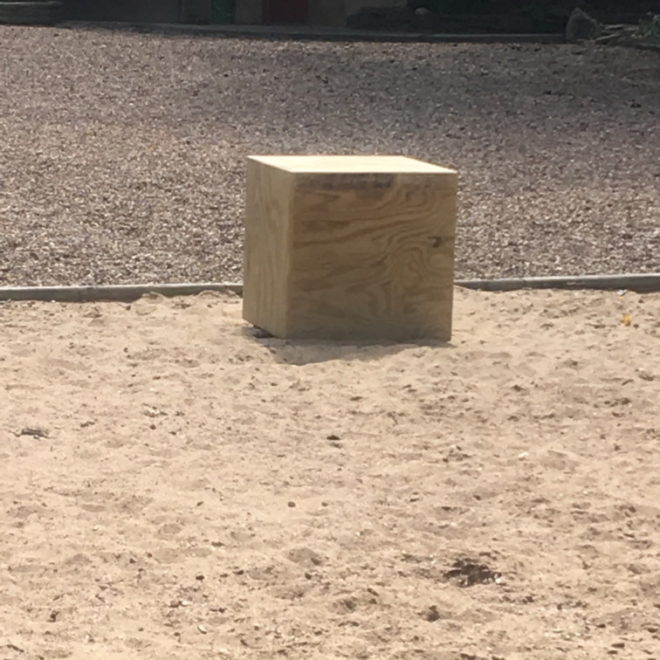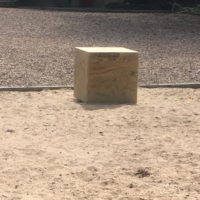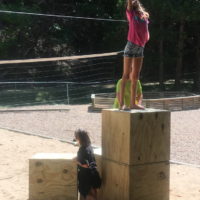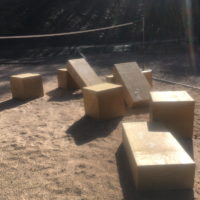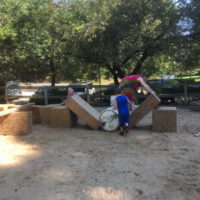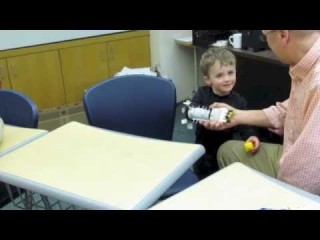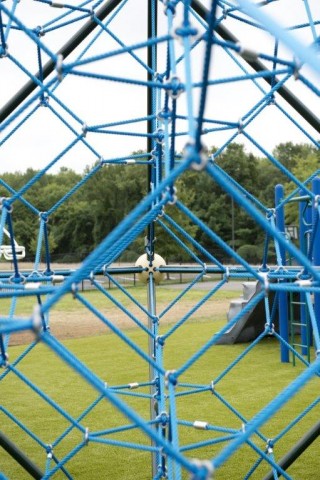As the inventor of Kindergarten Friedrich Froebel had a profound effect, not only on education, but on culture at large. Frank Lloyd Wright attributed his having become an architect to play with Froebel’s blocks. He said of Froebel’s gifts, 3, 4 and 5, “I can still feel those maple blocks in my hands to this day.”
I was also inspired by a lovely book offered free on Google Play, “a Catalog of Play Equipment” by Jean Lee Hunt, 1918. It shows that children can invent their own resources for learning and play.
I decided to build a set of very large Froebel’s gifts, 3 and 4 to occupy a large sand box that serves at times as a volleyball court. I introduced the blocks just as the original Froebel’s blocks were introduced, one type at a time, thus allowing the kids to exhaust possibilities before the next set was introduced.
The big blocks have become a hit. Every time I arrive on campus I find them in a new arrangement. They’ve been used to create houses, forts, stages for spontaneous theatrical performances, obstacle courses, and much more. The blocks are large enough that they require cooperation and collaboration.
The blocks are hollow and are made of ½ in thick treated plywood. To provide strength to the corners and to have sufficient surface area for narrow crown staples and glue, I added interior blocking made from 5/4 treated deck boards ripped into squares.
The blocks from gift number 3 are cubes, each 2 feet on a side. The gift number 4 blocks are 2 ft. x 4 ft. and one foot thick. Because Froebel’s gifts also offered cylindrical forms, we added plastic barrels to further stimulate creative engagement.
Is this just play? I suggest other terms for what the kids do with these blocks. They build. They engineer. They collaborate. They learn about gravity and structure. They exercise. They learn about the real world, about each other and about themselves. They also discover that they can have effect in shaping the environment in which we live. — Doug Stowe
